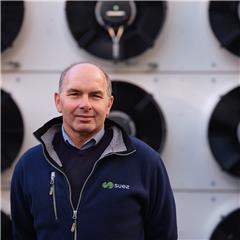Using satellites to help reduce leakage by 15%
Water companies have all agreed with the regulator, Ofwat, that they will reduce leakage levels by at least 15% through AMP7. While entirely possible, this will take a huge effort and it’s clear that a change in strategy could be required.
Will doing more of the same be enough?
Historically leakage levels have mostly been maintained by several activities; ‘boots on the ground’, the management of DMA nightlines and acoustic logging, which in most cases have been adequate to maintain pre AMP7 levels. The challenge will be to reduce leakage levels from a relatively low starting point and then reduce leakage levels by another 15%; maybe something different will be required?
Something different – Satellite Leak Detection: what is it?
Images acquired by a Synthetic Aperture Radar (SAR), mounted on a satellite orbiting at 630km above earth, are analysed to detect underground leaks in water systems.
The satellite-based methodology is a pre-location tool, that combined with current acoustic detection methods, significantly increases efficiency and effectiveness in pin-pointing leaks.
The information is provided periodically, presented as a web or mobile graphic leakage report containing the locations of suspected leaks.
How did it start?
The idea of using remote sensing to find underground water started at the Hebrew University, Jerusalem. An Israeli scientist was conducting research for his thesis in P-band SAR applicability and performance for Mars and Venus exploration: imaging subsurface geology and detecting shallow moisture.
From that, the technology was adapted for locating underground water on Earth, helping reduce NRW around the world.
Technology maturity
Satellite leak detection was first introduced in the UK in 2017 by SUEZ, in conjunction with technology partner, ASTERRA. In the first two years several major water utilities conducted trials, initially to verify the technology and then to assess its commercial value and ROI. In 2019, large projects covering thousands of kilometres of pipes were executed and the first ‘multi-annual entire network’ contract was signed.
The ASTERRA Recover solution for satellite leak detection takes advantage of two physical characteristics of SAR operating in the L frequency band:- Sub-surface penetration
- Sensitivity to dielectric constant
ASTERRA developed and patented its algorithm to analyse imagery acquired by the SAR to identify leaks at relative high accuracy and special precision.
The algorithm has two phases, noise filtering and pixel analysis, to check whether it contains water (dielectric constant = 80). Pixels containing water are then georeferenced and presented on a map overlaid with customer GIS information (pipes location and material, DMAs boundaries, etc.)
Physical characteristics of L-Band SAR have been known for almost 60 years. It is also known that such a low frequency (1.3 GHz) generates very ‘noisy’ imagery and low spectral accuracy. Utilis’ algorithm overcomes these challenges and use machine learning to continuously improve and deliver leaks location within a 100 meters buffer.
Satellite leak detection is a pre-location solution to show where the leaks are, with accuracy mentioned above, and so leakage inspectors need to survey about 90% less pipes length to pin-point leaks.
Introducing new technologies into the UK water industry
The introduction of any new technology requires trust and belief. Once a technology has been accepted the company will need to adopt as business as usual, sounds easy but in reality changing the way people work or processes that have been developed over a number of years could, at best cause delay in implementation or worse case stop innovation in its tracks.As with any new technology, satellite leak detection has developed and improved. It was clear from the early trials that managing a huge number of points of interest was going to be difficult. Introducing the App and dashboard allowed companies to manage the process much more easily and also gain valuable benchmarking data. This allows the utility companies to compare satellite leak detection to existing technologies and strategies.
SUEZ and ASTERRA deliver a number of points of interest for the utility company. What’s then required is a survey to pinpoint the actual location of the leak. This can be carried out by in-house water company technicians, trained by the SUEZ and Utilis experts.
To achieve the best results, it requires a dedicated resource that can fully focus on pinpointing leaks. Obviously this isn’t always possible with water companies’ other commitments. More recently SUEZ have been able to offer dedicated leak detection teams to carry out the pinpointing, allowing water companies to focus on the day to day activities of active leakage control.
How effective is it?
To illustrate its effectiveness, following a survey of 6000km of distribution and trunk mains pipework, one company achieved leakage savings of over 2 million litres per day at a cost of £180k per ML/d, which included the satellite leakage report, leak pinpointing and the repairs. The leaks were detected across all asset types (mains, customer, ferrule, valve, hydrant, etc), across all types of ground cover (tarmac, earth, concrete, brick, etc) and across all pipe materials.
